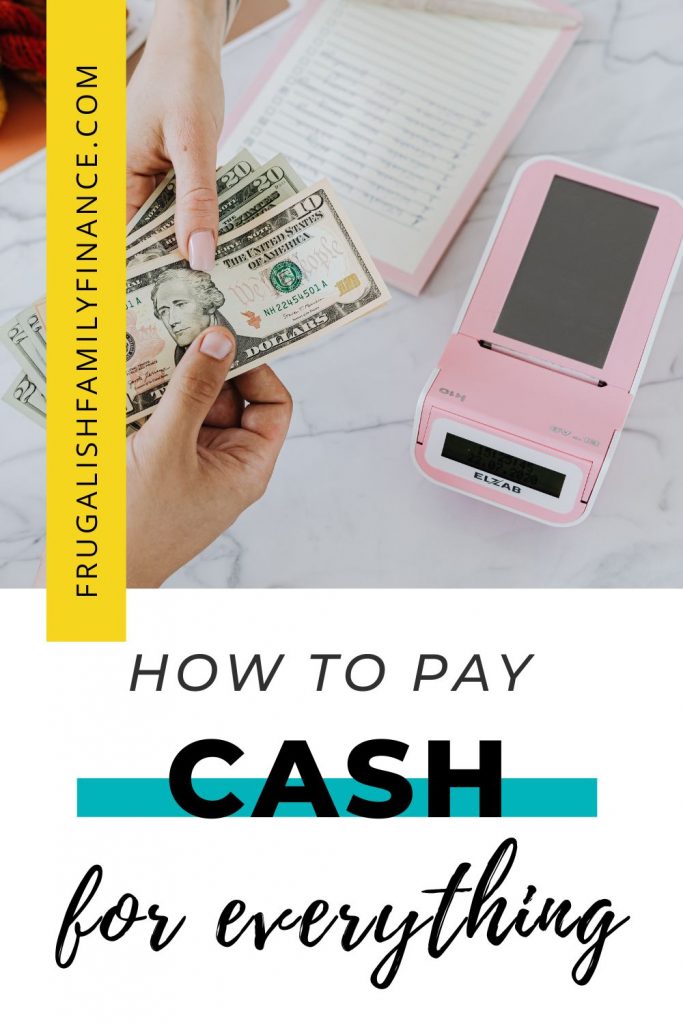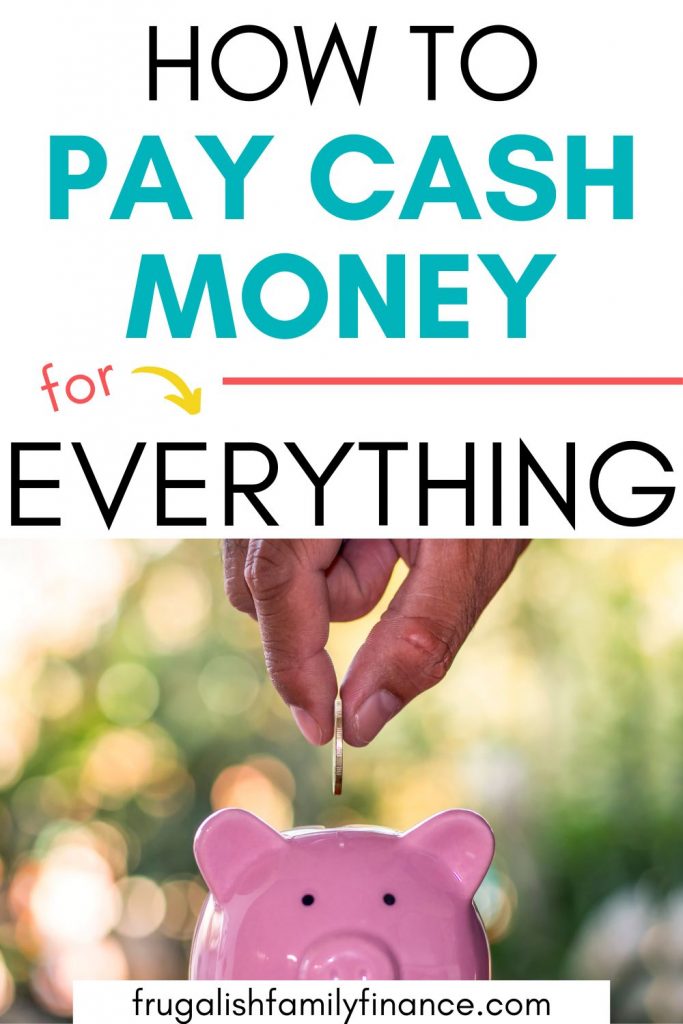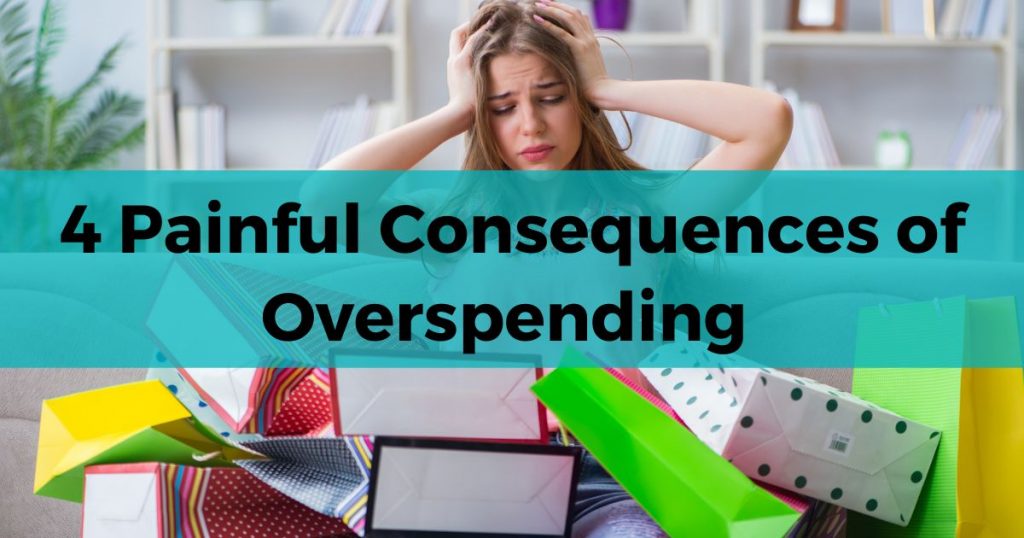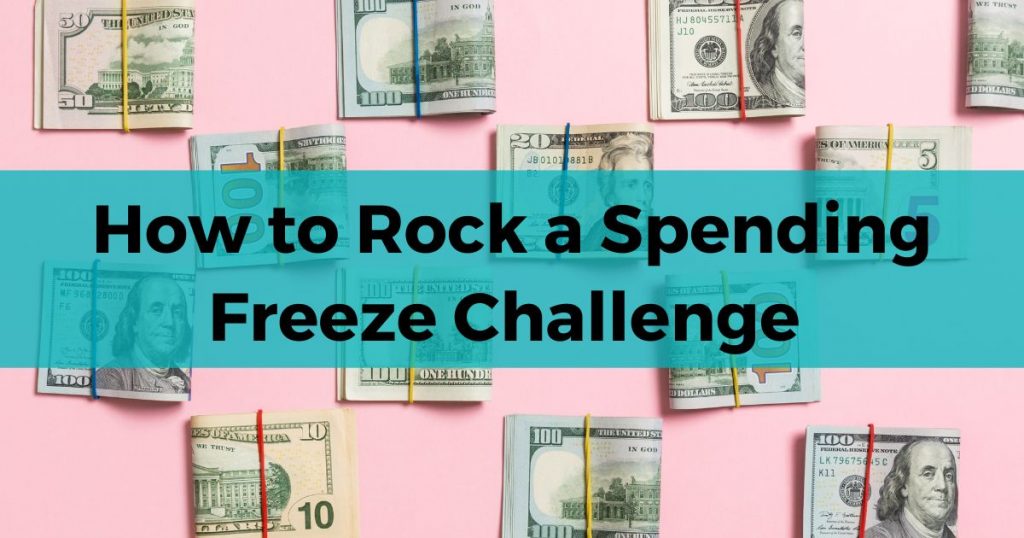Do you ever wonder how people can afford to pay cash for big purchases?
Most of us are quick to pull out the credit card when we want or need something. Having the cash to pay for these items is the luxury of a big paycheck, right? But that’s not the case at all.
The real reason…sinking funds!
What is a sinking fund, you may be thinking? In short, a sinking fund is a way to save for things you want or anticipate needing.
It’s a concept that seems foreign in today’s world. With everything readily available at our fingertips with next day delivery. But with a bit of patience and a change in money mindset, saving for wants and needs is the best way to stay out of debt.
So, today we’ll talk about sinking funds for beginners. All you need to know to keep yourself out of debt and pay cash for everything you want!
Related: 5 Secrets To Master Your Money Mindset
Disclaimer: This post may contain affiliate links. This means I receive a small commission, at no extra cost, if you purchase using the links below. Please see my earnings disclaimer for more details.
Table of Contents
What is a sinking fund?
As I said above, a sinking fund is a way to save and pay cash for the things you want.
But it’s more than just a savings account. Sinking funds are a system of saving for expenses that aren’t on your monthly budget.
You create different categories, such as a down payment for a home, new furniture, or a car, then determine how much you’ll save for it monthly.
What is the purpose of a sinking fund?
Sinking funds are used for:
- Something that doesn’t happen in your monthly budget but occurs on the same day (Christmas, yearly subscriptions, Birthdays, etc.)
- Something that doesn’t happen monthly, and you don’t know when it will happen, but you know the expense is coming (home repairs, new tires, etc.)
Sinking funds keep you from going into credit card debt for something you could have saved and prepared for.

Benefits of a sinking fund
Here are a few benefits of saving sinking funds.
Sinking funds help you manage your debt
Having sinking funds will help you manage your debt because
- You’re not caught off guard by expenses and using your credit card to cover them.
- You can pay off more debt because you’ve already saved for upcoming costs.
Related: How to Slay Your Debt Using the Debt Snowball
Less impulse spending with sinking funds
Saving helps you learn self-control.
According to an article by Psychology Today, people who have mastered delayed gratification are more likely to succeed in all aspects of their life. Which leads to reaching their long-term goals.
Although it may be painful at the moment, saving and paying cash will be worth the long-term reward.
Sinking funds save money on interest rates
When you buy something with cash, you don’t have to worry about the interest on your credit cards.
Even those 0% interest credit cards can turn into an enormous amount of interest if you make a late payment or wait to pay the item off in time.
The problem with sinking funds
Sinking funds aren’t the problem. How you save for them is what can be problematic.
Saving all at once for a bunch of sinking funds may stretch your money too thin, leading to a lack of motivation.
Also, let’s face it, sometimes it sucks not being able to spend impulsively.
But the wait is worth the reward.
How to set up a sinking fund?
Here are a couple tips to help you set up your sinking fund categories.
Define the categories of your sinking funds
Last year’s spending will be a good indicator if you need to know what things you should be saving for.
Take a look at what you spent your money on. Were there any annual expenses you didn’t account for, or are there upcoming things like appliances that need to be replaced?
Make a list of everything you should save for throughout the year.
Decide on the amount you want to save
Figure out how much you need and how much you will save each month.
You can look at your monthly spending, see what you spend on specific categories, and add them up for the year. This works for things like medical expenses, personal care, or child-related expenses.
Or, you can research how much an expense is to see how much needs to be saved. This works for things like vacations or new furniture.
After knowing how much to save, you would divide that amount by the months you want to save, or you can choose a percentage to put towards your goal until it’s reached.
Then, make it a line item on your budget so the money will be saved and not forgotten or spent on something else.
Save and track your sinking funds
Wherever you put your savings, whether separate accounts for each sinking fund or just one account, be sure to track how much you have.
Saving for ten different sinking funds at a time can stretch your money too thin, causing you to lose motivation.
Therefore, choose a couple of sinking funds at a time to save for. Once the amount is reached for those first ones you choose, move on to the next couple.
Examples of sinking funds everyone should have
There are a couple sinking funds everyone should definitely have.
- Medical bills (this includes copays)
- Holidays (Thanksgiving dinner, Christmas gifts, Memorial day bbq, etc.)
- Home repairs (HVAC annual maintenance, kitchen remodel, fence repair, etc.)
- Car repairs (oil changes, new tires, etc.)
- Child expenses (extra-curricular activities, school activities, etc.)
- Retirement account (401K or Roth IRA)
- Vacation fund
Tips for starting sinking funds
Here are my top tips for starting a sinking fund.
Budget and track
A budget will help you see how you manage your money. Most people are overspending without even realizing it. Small purchases add up in the end. Therefore, create a monthly budget and track your spending.
Have an emergency fund
Having emergency savings will give you peace of mind. With a safety net in place, you don’t have to worry about pulling from other saving accounts because you have a fund dedicated to unexpected costs.
Pick a couple to start with
Don’t go crazy opening 10 or more savings accounts at first. I would choose one sinking fund category (at most two) to start with. You can move on to the next when you have enough money to fund that account.
Limit your savings if you’re in debt
If you’re trying to pay off debt, you want to limit what sinking funds you have.
The reason is that you want to pay off your debt as quickly as possible.
Sinking funds are necessary. But be smart about what you’re saving for. You don’t need to save for a huge flat screen tv or a boat when you are $50,000 in debt.
How to organize sinking funds
First, the sinking fund should be listed as a budget item on your monthly budget. This way, the savings will actually happen.
Then, when it comes time to save, you put it into your savings account.
Now you can save two different ways.
- Put the money into the savings account for each individual sinking fund you need to save for.
- Transfer all the money into one savings account and keep track of your sinking funds and the totals.
In any case, it depends on your personality and what savings method works for you.
Free sinking fund tracker
A sinking funds printable will help you keep track of your savings and stay motivated to reach your savings goals.
Get your free printable below to start tracking your sinking funds.
Frequently Asked Questions about sinking funds for beginners
Here are the most frequently asked questions about sinking funds.
What is the difference between an emergency fund and a sinking fund?
An emergency fund and a sinking fund are both savings accounts, but they differ significantly.
Emergency fund
An emergency fund is 3-6 months of expenses set aside for an emergency or unplanned expenses that can’t wait. For example…
- Car accident
- Unexpected hospitalization
- Lost job
Sinking fund
A sinking fund is money saved for what you want or anticipate you will need in the future. For example…
- Family vacation
- New car
- Expected car repair
- Kitchen remodel
Therefore, emergency funds are for unexpected expenses, and sinking funds are for planned expenses.
What is the difference between a sinking fund and a savings account?
A savings account is a sum of money sitting in the bank for a rainy day. The money isn’t dedicated to any one thing.
However, a sinking fund is a savings account with a goal in mind for a specific purpose.
How much should you have in a sinking fund?
Everybody’s sinking fund savings and amounts will differ, so there is no one absolute answer.
But you should start planning your sinking fund at least 6 months in advance. You should save a year or more ahead of time if it’s a large ticket item.
Think of the end amount you want to save as you plan ahead. Then, divide that final amount by the number of months you have to save.

Best sinking fund apps
An app can help track your sinking funds. Below are a few apps to help you reach your savings goal.
Everydollar App
Everydollar app is a zero-based budgeting app by Ramsey Solutions.
But, it has a section specifically for saving that you can use to track your sinking fund savings, which is really helpful.
Mint
Mint is a free money management app by Intuit. You can manage your budget, debt, savings, and more.
Most importantly, you create sinking funds to track under the goals section. It will even help you find a savings account to open if you need one.
Qapital
Qapital is a different kind of savings app. The app automatically withdrawals from your checking into an FDIC-insured goals account.
Every payday, you set a percentage, and the money is then taken from your account.
When you have met your savings goal, just transfer it back to your checking and use the money for whatever it was saved for.
Related: How To Use EveryDollar App To Better Manage Your Money
Best place to keep your sinking funds?
There are a couple ways to save your sinking fund accounts.
- Traditional savings accounts
- High-yield savings account
- Money market mutual fund
Consider a high-yield savings or money market account to maximize your earning potential.
Many saving accounts allow you to create savings buckets within one account. This is great because you don’t have to worry about opening multiple accounts.
To help find the best account for your money, make sure to do some research.
- Make sure it’s easily accessible.
- No penalty for withdrawals.
- Find out any additional fees associated with the account.
What if you don’t have money to save?
If you need more savings, revisit your budget. Find ways to make cuts and save more money.
If you still need to save more, it might be a good idea to pick up a side hustle on your days off.
Or, get creative and sell some stuff around the house. We all have a ton of junk we could get rid of.
Related:
Turn Clutter into Cash: How to Declutter and Make Money
Ultimate Guide For How To Get Sales On Poshmark In 2023
Conclusion
Sinking funds are a system of saving for things you want or anticipate you’ll need in the future.
To set up a sinking fund, you need to…
- Choose a category.
- Determine the goal amount and date.
- Figure out how much to save monthly.
- Create a line item in your budget to make sure you actually save.
Saving for upcoming expenses helps you stop impulse spending, save on interest rates, and better manage your money and debt.
Which, in the end, helps you achieve your financial goals.
Do you use sinking funds to save? Leave a comment below with your best tips!






Love the idea of a tracker! I definitely need to get better about Sinking funds. I feel like if I put them in my regular checking account, I’ll spend them (I am NOT naturally frugal no matter how hard I try!). I like the idea of separate savings accounts… Hmmm… Maybe I’ll look into that!
Separate savings is definitely the way to go. I know of several savings accounts that let you set up buckets within the one account, so you don’t have to open multiple. I am currently looking into Ally Bank. It seems to be a great high yield savings account with the bucket option!
Love this post which clearly explains so well why we all need a sinking fund! Had mine for 30 years. I call it my retirement fund!
Love that! I wish we would have started saving for retirement earlier, but we are on track now!
I think splitting your paycheck deposit straight away is the best way to make sure the transfers to emergency funds and sinking funds are done.
I have an account I set up many years ago that I transfer $50 automatically to every month. I’ve never missed that $50 and there is over $15,000 in that account now ( its an investment account).
Love this! That is a great idea! An automatic deposit so you don’t even miss it.
There is a lot of helpful information in this article regarding sinking funds. I’m going to bookmark for later. Thank you for sharing!
Glad you found it helpful!
This is so helpful! Since I paid off my debt sorting out my sinking funds, especially the annual expenses and an emergency fund has been THE thing that has kept me from slipping back into debt. They always used to trip me up before.
It’s such a simple thing, but can make such a huge impact on our finances!
Alot of helpful information. Thanks for sharing this.